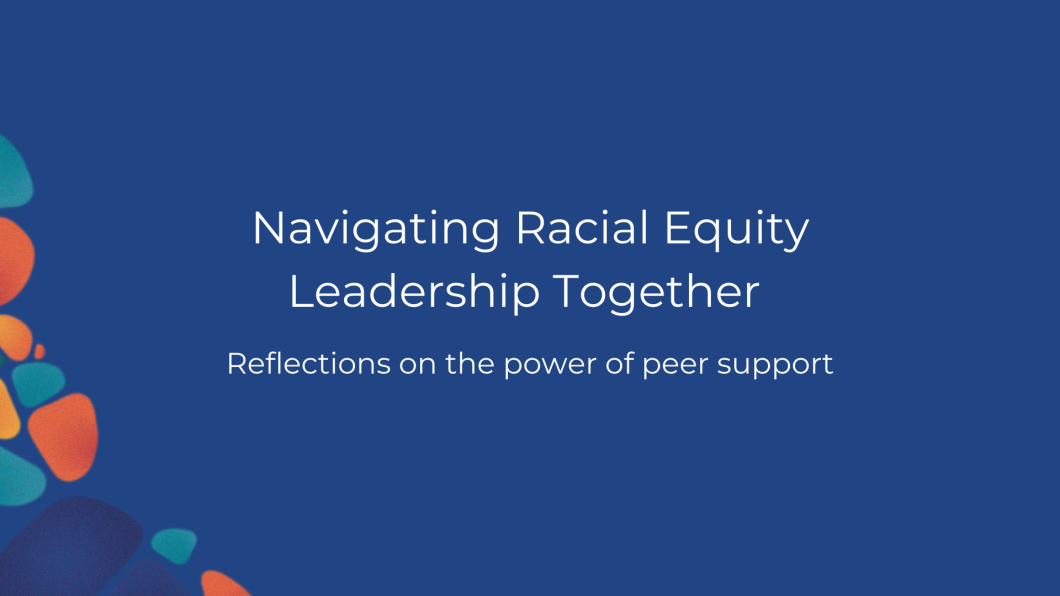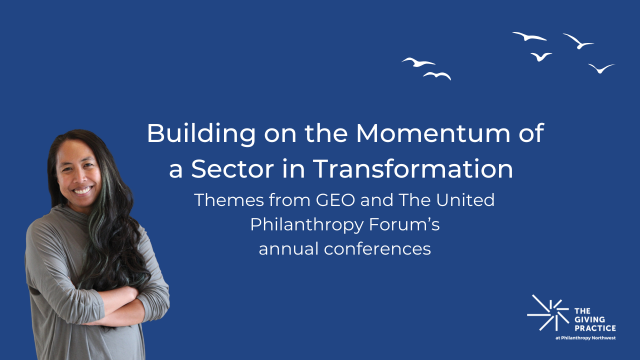
Each year, thousands of long-distance hikers — also known as thru-hikers — embark on 2,000+ mile journeys by foot. For those who choose the Pacific Crest Trail – a 2,655-mile trail from Mexico to Canada – for example, day one comes with a 1,200-foot climb that puts their confidence of completing 2,630 more miles to the test. On day three they find comfort in the ways they find their bodies adjusting to life on the trail. They’re energized by blue skies and new landscapes. And on day five they wake up to soaking wet boots after a night of rain. This goes on for another five months or so.
In many ways, centering racial equity in an organization can feel a lot like thru-hiking, but on a much longer trail. There’s uncertainty, feelings of isolation and feelings of exhaustion. And there’s beauty, moments of joy, moments of hope and progress. Sometimes you might take a wrong turn, and other days you may need to take what thru-hikers call a “zero day,” where no physical mileage is gained, and rest is prioritized.

For thru-hikers, meeting others who are also on the long-distance journey – exchanging stories, sharing tips and getting some physical and mental mileage in together – is often one of the most meaningful and fueling experiences on the trail. And we've observed that this holds true for those on racial equity journeys too. When individuals and groups wrestling with racial equity work come together, suddenly progress feels a little more achievable, and the deep relationships developed help propel the work even further.
If you’re familiar with our work, you’ll know that we believe environments where peers can convene, learn and grow together are critical to transformative work. And this is especially important when, unlike thru-hiking, racial equity work doesn’t come with a map. In fact, we’re all on slightly different trails drawing our own maps, and the more we can connect and share our experiences, the more we’ll find similarities in our challenges or opportunities, and tools to navigate them.
This is why for nine years now, we have been designing and facilitating peer cohorts for executive leaders advancing racial equity, diversity and inclusion (REDI) in their organizations. Across the years, we’ve been humbled and inspired by the 60+ CEOs and trustees who have participated in our cohorts as they’ve shown up with candor, vulnerability and curiosity. Together, leaders have explored a variety of dilemmas across the personal, interpersonal, organizational and systemic levels of racial equity, with questions like:
- As a trustee who is also a person of color, how do I voice my concern that I feel burdened by the expectation that I will “teach” my white board colleagues?
- How can I be a better leader on racial equity, as a white male who has so much to learn?
- How do I navigate different expectations between board and staff, and move the board into deeper learning while addressing the urgency of staff?
- How can we examine a changing narrative about family wealth to acknowledge the extractive ways in which the wealth was generated?
As we’ve observed leaders tackling the complexities of REDI work together, we’ve witnessed personal transformations, renewed energy and most importantly, action. In our latest report, we provide a deeper look into our peer cohort experience and what we’ve learned on why peer cohorts are so effective. We also share our cohort design methodology and sample activities as resources for others looking to explore cohort facilitation.
You can access the report here.
Join our mailing list to stay up to date on our latest reflections, insights, interviews and more.



